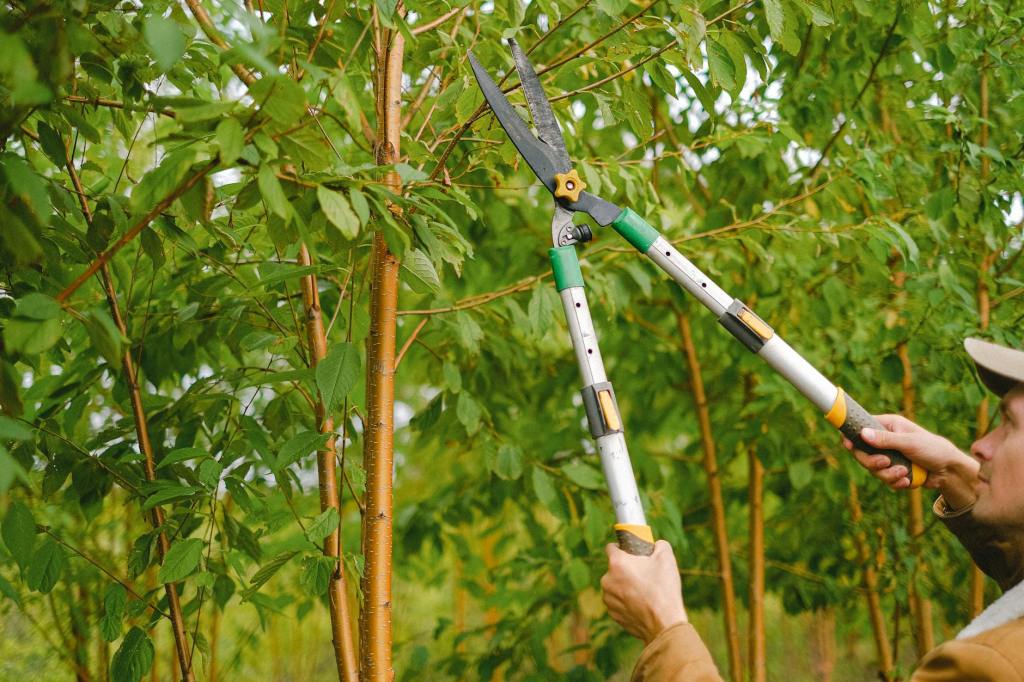The Pacific Northwest boasts a diverse array of flora, from the iconic Japanese maples to the vibrant blooms of rhododendrons and the lush foliage of laurels. To keep your garden thriving year-round, mastering the art of pruning is essential. In this guide, we’ll explore the appropriate pruning times and techniques for common Pacific Northwest plants, ensuring they reach their full potential.

Japanese Maples
Pruning Japanese maples is a delicate task that requires precision and care. The best time to prune is during late winter or early spring, before new growth emerges. Focus on removing any dead, damaged, or crossing branches to maintain the tree’s graceful form. Avoid heavy pruning during the growing season, as this can stress the tree and inhibit its growth.

Rhododendron
Rhododendrons dazzle with their vibrant clusters of flowers, but proper pruning is key to keeping them healthy and blooming abundantly. Prune rhododendrons immediately after they finish flowering, typically in late spring or early summer. Remove spent flowers and any dead or diseased branches, taking care not to cut into the woody stems. Light pruning will encourage new growth and ensure a full display of blooms the following year.
Boxwood and Other Hedges
Hedges, including boxwood and laurels, require regular pruning to maintain their shape and density. The ideal time to prune is in late spring or early summer, once new growth has emerged. Use sharp shears to trim the hedge to the desired shape, making sure to cut just above a leaf node to promote bushy growth. Lightly prune throughout the growing season to keep the hedge neat and tidy.

Roses
Roses are a beloved staple of Pacific Northwest gardens, but they require specific pruning techniques to thrive. The best time to prune depends on the type of rose:
- Hybrid Tea and Floribunda Roses: Prune in late winter or early spring, just before new growth begins. Remove any dead or diseased wood, as well as weak or crossing branches. Cut back remaining canes to about 12-18 inches above the ground to encourage vigorous growth and abundant blooms.
- Shrub and Climbing Roses: Prune after flowering in late spring or early summer. Remove spent flowers and any dead or overcrowded branches to improve air circulation and prevent disease. Cut back long, leggy stems to promote bushier growth and a more compact shape.

Hibiscus
Hibiscus adds a tropical touch to Pacific Northwest gardens with its showy flowers and glossy foliage. Prune hibiscus in late winter or early spring, before new growth appears. Remove any dead or weak branches, as well as any crossing or overcrowded stems. Lightly shape the plant by cutting back long or unruly branches, but avoid heavy pruning, as hibiscus blooms on new growth.
Ornamental Grasses
Ornamental grasses bring texture and movement to garden beds, but they require minimal pruning to thrive. In late winter or early spring, cut back ornamental grasses to within a few inches of the ground to remove dead foliage and promote fresh growth. Avoid cutting too late in the season, as this can delay new growth and leave the plant looking unsightly.

Yew
Yews are versatile evergreen shrubs that respond well to regular pruning. The best time to prune is in late winter or early spring, before new growth begins. Trim yews to maintain their desired shape and size, focusing on removing any dead, damaged, or overgrown branches. Lightly shape the shrub to promote dense growth and a tidy appearance.
Hellebore
Hellebores are prized for their early spring blooms and attractive foliage, but they require minimal pruning to thrive. Remove any spent flowers and dead or damaged leaves in late winter or early spring to tidy up the plant and encourage new growth. Avoid heavy pruning, as hellebores prefer to be left undisturbed once established.
Other Perennials
When it comes to pruning other perennials in the Pacific Northwest, timing and technique vary depending on the plant species. In general, it’s best to prune after flowering to avoid disrupting the plant’s natural growth cycle. Remove spent flowers and any dead or diseased foliage, taking care not to cut into healthy stems. Lightly shape the plant as needed to maintain its form and encourage bushy growth.
In conclusion, mastering the art of pruning is essential for maintaining the health and beauty of your Pacific Northwest garden. By understanding the appropriate pruning times and techniques for common plants like Japanese maples, rhododendrons, boxwood, and others, you can ensure your garden remains a vibrant oasis year-round. With a little time and effort, your garden will thrive and delight for seasons to come.



Leave a comment